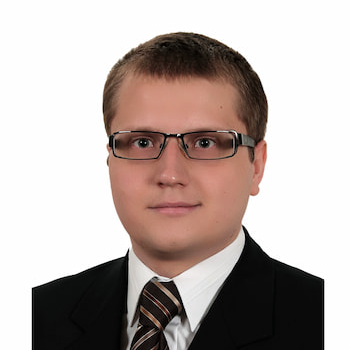Porous Carbon Nanomaterials
A special issue of Nanomaterials (ISSN 2079-4991). This special issue belongs to the section "2D and Carbon Nanomaterials".
Deadline for manuscript submissions: closed (28 August 2022) | Viewed by 15839
Special Issue Editors
2. Centre for Modern Interdisciplinary Technologies, Nicolaus Copernicus University, Wilenska 4, 87-100 Torun, Poland
Interests: nanomaterials; 3D nano-scale structuration of graphene flakes by physical and chemical methods; carbon molecular sieves; N-rich nano-porous carbon matrixes; thermal direct conversion of polymers to multi-walled carbon nanotubes; porous carbon–based materials for applications in supercapacitors; metal–air batteries; solar cells; biological sensing
Special Issues, Collections and Topics in MDPI journals
Interests: nanomaterials; carbon nanotubes; 3D nano-scale structuration of graphene flakes by physical and chemical methods; hybrid carbon materials for applications in supercapacitors, metal–air batteries, and solar cells
Special Issues, Collections and Topics in MDPI journals
Special Issue Information
Dear Colleagues,
To this Special Issue of Nanomaterials, we welcome outstanding innovative contributions presenting methods for the preparation, modification, and application of porous carbons, particularly carbon black, glassy carbon, activated carbon, graphite, graphene, diamond, fullerenes, carbon nanotubes, carbon dots, and carbon-based hybrids, and other porous carbon-based materials. We also welcome contributions to the review of key trends and topics in the field of porous carbon-based materials for different applications.
This Special Issue aims to present a collection of original research articles and review papers that will provide researchers worldwide with an overview of the latest trends and progress in the research field of porous carbon materials.
Prof. Dr. Jerzy P. Lukaszewicz
Dr. Piotr Kamedulski
Guest Editors
Manuscript Submission Information
Manuscripts should be submitted online at www.mdpi.com by registering and logging in to this website. Once you are registered, click here to go to the submission form. Manuscripts can be submitted until the deadline. All submissions that pass pre-check are peer-reviewed. Accepted papers will be published continuously in the journal (as soon as accepted) and will be listed together on the special issue website. Research articles, review articles as well as short communications are invited. For planned papers, a title and short abstract (about 100 words) can be sent to the Editorial Office for announcement on this website.
Submitted manuscripts should not have been published previously, nor be under consideration for publication elsewhere (except conference proceedings papers). All manuscripts are thoroughly refereed through a single-blind peer-review process. A guide for authors and other relevant information for submission of manuscripts is available on the Instructions for Authors page. Nanomaterials is an international peer-reviewed open access semimonthly journal published by MDPI.
Please visit the Instructions for Authors page before submitting a manuscript. The Article Processing Charge (APC) for publication in this open access journal is 2900 CHF (Swiss Francs). Submitted papers should be well formatted and use good English. Authors may use MDPI's English editing service prior to publication or during author revisions.
Keywords
- porous carbons
- carbon-based materials
- graphene
- graphene exfoliation
- nanotubes
- nanomaterials
- N-rich nano-porous carbon matrixes
- N-rich activated carbons
- carbon molecular sieves
- hybrid materials







